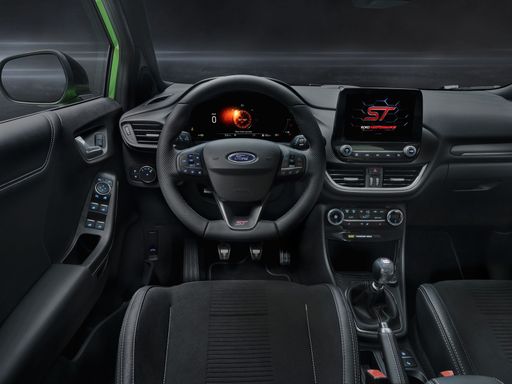Ford Puma vs Hongqi H9 – Performance, range & efficiency compared
Both models have their strengths – but which one suits you more?
Compare performance, efficiency, price and space directly: Ford Puma or Hongqi H9?
Costs and Efficiency:
Price and efficiency are often the first things buyers look at. Here it becomes clear which model has the long-term edge – whether at the pump, the plug, or in purchase price.
Ford Puma has a clearly advantage in terms of price – it starts at 24800 £, while the Hongqi H9 costs 60000 £. That’s a price difference of around 35224 £.
Fuel consumption also shows a difference: Ford Puma manages with 5.40 L and is therefore convincingly more efficient than the Hongqi H9 with 9.60 L. The difference is about 4.20 L per 100 km.
Engine and Performance:
Power, torque and acceleration say a lot about how a car feels on the road. This is where you see which model delivers more driving dynamics.
When it comes to engine power, the Hongqi H9 has a clearly perceptible edge – offering 245 HP compared to 168 HP. That’s roughly 77 HP more horsepower.
In acceleration from 0 to 100 km/h, the Ford Puma is hardly perceptible quicker – completing the sprint in 7.40 s, while the Hongqi H9 takes 7.80 s. That’s about 0.40 s faster.
In terms of top speed, the Hongqi H9 performs hardly perceptible better – reaching 230 km/h, while the Ford Puma tops out at 210 km/h. The difference is around 20 km/h.
There’s also a difference in torque: Hongqi H9 pulls clearly perceptible stronger with 380 Nm compared to 290 Nm. That’s about 90 Nm difference.
Space and Everyday Use:
Cabin size, boot volume and payload all play a role in everyday practicality. Here, comfort and flexibility make the difference.
Both vehicles offer seating for 5 people.
In curb weight, Ford Puma is significantly lighter – 1316 kg compared to 1875 kg. The difference is around 559 kg.
In terms of boot space, the Ford Puma offers clearly more room – 523 L compared to 0 L. That’s a difference of about 523 L.
When it comes to payload, Ford Puma hardly perceptible takes the win – 469 kg compared to 450 kg. That’s a difference of about 19 kg.
Who comes out on top?
Overall, the Ford Puma shows itself to be leaves the rival little chance and secures the title of DriveDuel Champion.
It convinces with the more balanced overall package and proves to be the more versatile choice for everyday use.

Ford Puma
Ford Puma
The Ford Puma presents itself as a stylish compact SUV with a distinctive design that combines practicality with a dynamic driving experience. Its sleek lines and sporty aesthetics make it stand out on the road, while the interior offers a comfortable and tech-savvy environment. With an emphasis on efficiency and a smooth drive, the Ford Puma is well-suited for both urban commutes and countryside adventures.
details @ puma.fordpresskits.com
@ puma.fordpresskits.com
 @ puma.fordpresskits.com
@ puma.fordpresskits.com
 @ puma.fordpresskits.com
@ puma.fordpresskits.com
 @ puma.fordpresskits.com
@ puma.fordpresskits.com
Hongqi H9
The Hongqi H9 asserts itself as a luxury sedan that seamlessly combines sophisticated design with opulent interior features, catering to those who appreciate grandeur and comfort. Characterized by a bold and elegant exterior, it commands the road with a presence that is both modern and majestic. Inside, occupants are treated to a lavish experience, with premium materials and advanced technology throughout, making every journey as pleasurable as possible.
details

|
|
|
|
|
Costs and Consumption |
|
|---|---|
|
Price
24800 - 36300 £
|
Price
60000 £
|
|
Consumption L/100km
5.4 - 5.9 L
|
Consumption L/100km
9.60 L
|
|
Consumption kWh/100km
13.1 - 13.9 kWh
|
Consumption kWh/100km
-
|
|
Electric Range
361 - 376 km
|
Electric Range
-
|
|
Battery Capacity
43 kWh
|
Battery Capacity
-
|
|
co2
0 - 135 g/km
|
co2
220 g/km
|
|
Fuel tank capacity
42 L
|
Fuel tank capacity
62 L
|
Dimensions and Body |
|
|---|---|
|
Body Type
SUV
|
Body Type
Sedan
|
|
Seats
5
|
Seats
5
|
|
Doors
5
|
Doors
4
|
|
Curb weight
1316 - 1563 kg
|
Curb weight
1875 kg
|
|
Trunk capacity
456 - 523 L
|
Trunk capacity
0 L
|
|
Length
4186 - 4226 mm
|
Length
5137 mm
|
|
Width
1805 mm
|
Width
1904 mm
|
|
Height
1550 - 1555 mm
|
Height
1493 mm
|
|
Max trunk capacity
1216 - 1283 L
|
Max trunk capacity
-
|
|
Payload
367 - 469 kg
|
Payload
450 kg
|
Engine and Performance |
|
|---|---|
|
Engine Type
Electric, Petrol MHEV
|
Engine Type
Petrol MHEV
|
|
Transmission
Automatic, Manuel
|
Transmission
Automatic
|
|
Transmission Detail
Reduction Gearbox, Manual Gearbox, Dual-Clutch Automatic
|
Transmission Detail
Dual-Clutch Automatic
|
|
Drive Type
Front-Wheel Drive
|
Drive Type
Rear-Wheel Drive
|
|
Power HP
125 - 168 HP
|
Power HP
245 HP
|
|
Acceleration 0-100km/h
7.4 - 9.8 s
|
Acceleration 0-100km/h
7.80 s
|
|
Max Speed
160 - 210 km/h
|
Max Speed
230 km/h
|
|
Torque
170 - 290 Nm
|
Torque
380 Nm
|
|
Number of Cylinders
3
|
Number of Cylinders
4
|
|
Power kW
92 - 124 kW
|
Power kW
180 kW
|
|
Engine capacity
999 cm3
|
Engine capacity
1989 cm3
|
General |
|
|---|---|
|
Model Year
2025
|
Model Year
2025
|
|
CO2 Efficiency Class
A, D
|
CO2 Efficiency Class
G
|
|
Brand
Ford
|
Brand
Hongqi
|
Is the Ford Puma offered with different drivetrains?
The Ford Puma is offered with Front-Wheel Drive.
The prices and data displayed are estimates based on German list prices and may vary by country. This information is not legally binding.
